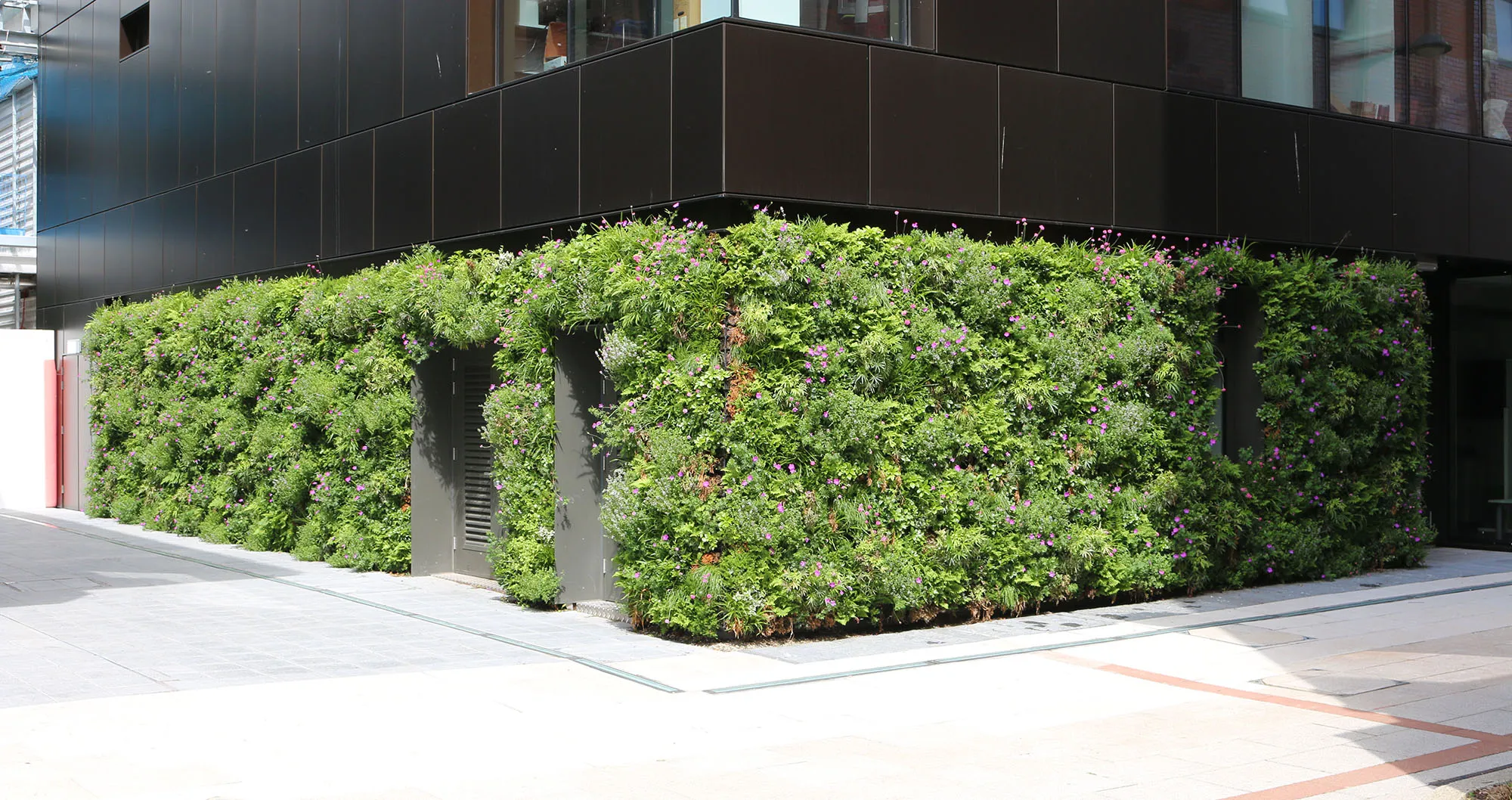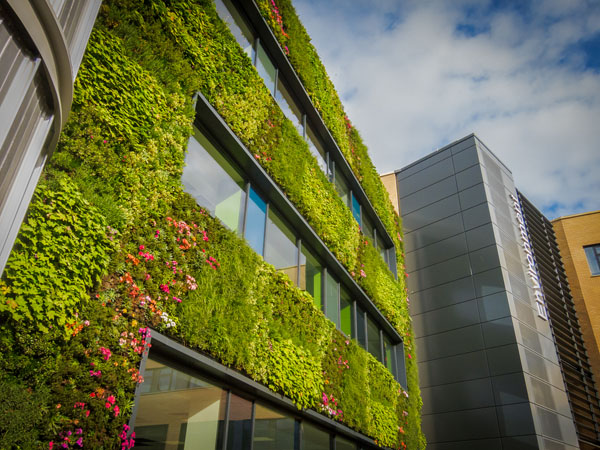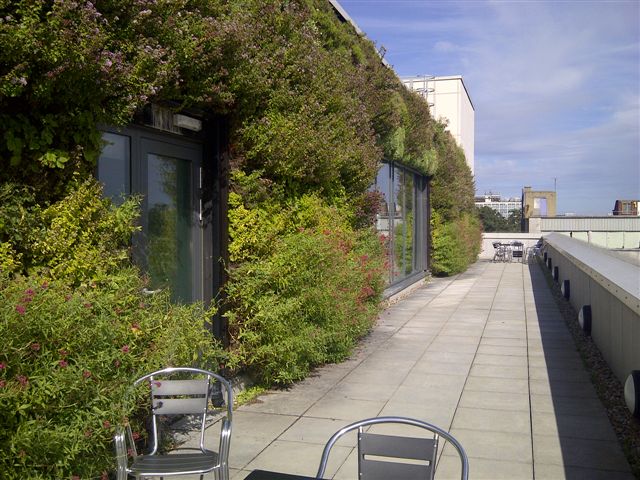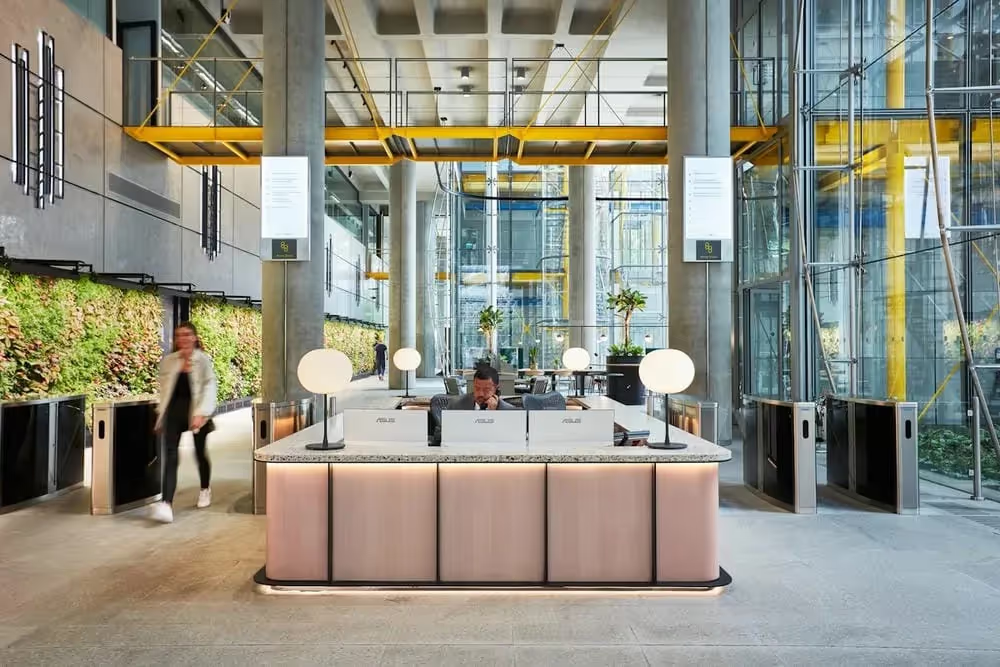The Impact of Living Walls on UGF Scores

Urban Greenery Factor (UGF) has become a crucial metric in assessing the sustainability and liveability of urban environments. As cities grow denser, the integration of green spaces within urban landscapes becomes imperative for maintaining environmental quality and enhancing overall well-being.
In recent years, living walls have emerged as a popular solution to increase greenery in urban settings. This blog explores the correlation between living walls and UGF scores, shedding light on the benefits they offer and their potential to elevate UGF ratings.
Understanding UGF
What is UGF?
UGF is a quantitative measure used to evaluate the amount of green space within urban areas. It considers factors such as vegetation coverage, biodiversity, and accessibility to green spaces. UGF is an essential component of urban planning and design, aiming to promote sustainability and mitigate the adverse effects of urbanisation.
Why is UGF important?
UGF plays a vital role in enhancing the quality of urban life. Green spaces have been linked to numerous benefits, including:
- improved air quality
- reduced urban heat island effect
- enhanced biodiversity
- increased recreational opportunities
Moreover, greenery has a positive impact on mental health and overall well-being, offering respite from the stresses of urban living.

Impact of Living Walls on UGF
Living walls, also known as green walls or vertical gardens, offer a multitude of benefits that contribute to enhancing UGF scores:
- Air quality improvement: Living walls act as natural air filters, absorbing pollutants and releasing oxygen, thereby improving air quality within urban environments.
- Biodiversity enhancement: By providing habitat for various plant species, living walls promote biodiversity and support urban wildlife.
- Temperature regulation: Living walls help mitigate the urban heat island effect by providing shading and evaporative cooling, thus reducing temperatures in their vicinity.
- Noise reduction: The dense vegetation of living walls helps absorb sound, reducing noise pollution in urban areas.
- Aesthetic enhancement: Living walls add visual appeal to urban landscapes, transforming drab facades into vibrant, green spaces that uplift the overall aesthetic quality of the environment.
How Living Walls Can Help Improve UGF Calculation Score
Integrating living walls into urban infrastructure can significantly improve UGF calculation scores. By increasing the overall green coverage within the city, living walls contribute to meeting UGF requirements and achieving higher ratings.
Additionally, their diverse environmental benefits make them valuable assets in urban planning initiatives aimed at enhancing sustainability and liveability.
How Living Walls Can Help Improve UGF Calculation Score
Integrating living walls into urban infrastructure can significantly improve UGF calculation scores. By increasing the overall green coverage within the city, living walls contribute to meeting UGF requirements and achieving higher ratings.
Additionally, their diverse environmental benefits make them valuable assets in urban planning initiatives aimed at enhancing sustainability and liveability.
UGF Consultation with Viritopia
As a leading living wall specialist, at Viritopia our expertise in designing and implementing living walls has helped numerous cities elevate their UGF ratings and create healthier, more sustainable urban environments.
We design and implement living walls that help optimise UGF scores through innovative green solutions. Living walls offer a sustainable solution to increase greenery within urban landscapes and improve UGF scores. Their myriad benefits, including air quality improvement, biodiversity enhancement, and aesthetic enhancement, make them invaluable assets in urban planning and design.
How is Urban Greening Factor Score Calculated?
The UGF score is calculated through a standardised methodology that considers various factors related to green space within urban environments. While specific methodologies may vary slightly depending on the jurisdiction or organisation implementing them, the general principles remain consistent.
Here's a breakdown of how the UGF score is typically calculated:
- Assessment of Green Space: The first step involves assessing the extent and quality of green space within the urban area. This includes parks, gardens, street trees, urban forests, and other forms of vegetation. The total area of green space is measured and categorised based on factors such as size, density, and accessibility.
- Quantification of Vegetation: The next step is to quantify the amount of vegetation present within the defined green spaces. This involves measuring the area covered by trees, shrubs, grass, and other forms of vegetation. The diversity and health of the vegetation may also be considered in the assessment.
- Evaluation of Biodiversity: Biodiversity is an essential component of green space and is often evaluated as part of the UGF calculation. This includes assessing the variety of plant species present, as well as their suitability for supporting urban wildlife such as birds, insects, and small mammals.
- Accessibility and Connectivity: The accessibility of green spaces to urban residents is another important aspect considered in the UGF calculation. Factors such as proximity to residential areas, connectivity through pedestrian and cycling networks, and the presence of amenities such as benches, trails, and recreational facilities are evaluated.
- Environmental Benefits: The UGF score also considers the environmental benefits provided by green space, such as air quality improvement, temperature regulation, stormwater management, and carbon sequestration. These benefits are quantified based on scientific research and standardised metrics.
- Community Engagement and Social Equity: Some UGF methodologies incorporate indicators related to community engagement and social equity. This may include consultation with residents, consideration of cultural preferences, and efforts to address disparities in access to green space among different socio-economic groups.
- Calculation of UGF Score: Once all relevant factors have been assessed and quantified, the UGF score is calculated using a predetermined formula or scoring system. This score reflects the overall contribution of green space to the sustainability, resilience, and liveability of the urban environment.
Overall, the UGF score provides a comprehensive measure of the extent and quality of green space within urban areas, helping policymakers, planners, and stakeholders make informed decisions to promote sustainable urban development and improve the quality of life for urban residents.

Book a Consultation with Viritopia
With over 20 years of experience of designing and maintaining biophilic infrastructure, Viritopia can create a detailed plan of how a scheme will meet regulatory requirements.
We assist with faster planning process and provide you with what’s needed to elevate your project. Book a living wall consultation with our expert team today or find out more about our green walls and their benefits.
Explore more insights
Discover the latest in green infrastructure

Vanguard Logistics Park (Longmore) Featured in RIBA Commercial Directory 2025

Green Roof Advantages & Disadvantages

Design with meaning: How office living walls reflect your brand

